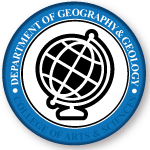Document Type
Article
Publication Date
12-17-2015
Publication Title
Science
Volume
351
Issue
6269
DOI
10.1126/science.aac8353
Abstract
INTRODUCTION
On 25 April 2015, the Gorkha earthquake [magnitude (M) 7.8] struck Nepal, followed by five aftershocks of ≥M 6.0 until 10 June 2015. The earthquakes killed ~9000 people and severely damaged a 550 by 200 km region in Nepal and neighboring countries. Some mountain villages were completely destroyed, and the remote locations, blocked roads, and landslide-dammed rivers prevented ground access to many areas.RATIONALE
Our “Volunteer Group” of scientists from nine nations, motivated by humanitarian needs, focused on satellite-based systematic mapping and analysis of earthquake-induced geohazards. We provided information to relief and recovery officials as emergency operations were occurring, while supported by one of the largest-ever NASA-led campaigns of responsive satellite data acquisitions over a vast disaster zone. Our analysis of geohazards distribution allowed evaluation of geomorphic, tectonic, and lithologic controls on earthquake-induced landsliding, process mechanisms, and hazard process chains, particularly where they affected local populations.RESULTS
We mapped 4312 coseismic and postseismic landslides. Their distribution shows positive associations with slope and shaking intensity. The highest areal densities of landslides are developed on the downdropped northern tectonic block, which is likely explained by momentary reduction of the normal stress along planes of weakness during downward acceleration. The two largest shocks bracket the high-density landslide distribution, the largest magnitudes of the surface displacement field, and highest peak ground accelerations (PGAs). Landslides are heavily concentrated where PGA was >0.6g and slope is >30°. Additional controls on landslide occurrence are indicated by their clustering near earthquake epicenters and within specific lithologic units. The product of PGA and the sine of surface slope (defined as the landslide susceptibility index) is a good indicator of where most landslides occurred. A tail of the statistical distributions of landslides extends to low values of the landslide susceptibility index. Slight earthquake shaking affected vulnerable materials hanging on steep slopes—such as ice, snow, and glacial debris—and moderate to strong shaking affected poorly consolidated sediments deposited in low-sloping river valleys, which were already poised near a failure threshold. In the remote Langtang Valley, some of the most concentrated destruction and losses of life outside the Kathmandu Valley were directly due to earthquake-induced landslides and air blasts. Complex seismic wave interactions and wave focusing may have caused ridgetop shattering and landslides near Langtang but reduced direct shaking damage on valley floors and at glacial lakes.CONCLUSION
The Gorkha earthquake took a tremendous, tragic toll on human lives and culture. However, fortunately no damaging earthquake-caused glacier lake outburst floods were observed by our satellite analysis. The total number of landslides was far fewer than those generated by comparable earthquakes elsewhere, probably because of a lack of surface ruptures, the concentration of deformation along the subsurface thrust fault at 10 to 15 km depth, and the regional dominance of competent high-grade metamorphic and intrusive igneous rock types.Recommended Citation
J. S. Kargel et al. ,Geomorphic and geologic controls of geohazards induced by Nepal’s 2015 Gorkha earthquake.Science351,aac8353(2016).DOI:10.1126/science.aac8353


Comments
“This is the author’s version of the work. It is posted here by permission of the AAAS for personal use, not for redistribution. The definitive version was published in Science on [Volume 351 Issue 6269], DOI: 10.1126/science.aac8353.”.